Diffit and Cathoven both offer AI resources which allow teachers to adapt materials to the needs of their students, and their AI resources can also be used to save teachers a great deal of time in lesson planning and preparation. Let’s take a look at these AI-based services to discover how and why they are different, and why one of these platforms is better suited for use by language teachers.
What is Diffit?
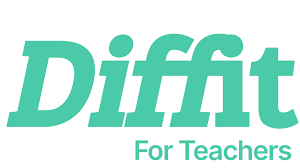
Diffit is a platform which helps teachers to produce a wide range of instructional materials to be used in the classroom, and the system also allows teachers to re-level any text to a specific US grade level.
Diffit appears to be most appropriate for subjects such as History, Civics, Government, Social Studies, Science, and related courses in which students are asked to read and respond to non-fiction texts.
Why do Teachers use Diffit AI?
Diffit’s goal is to save teachers time in lesson planning and materials preparation, and to allow them to provide their students with appropriate grade-level content, with the option to tailor the same lesson to different US grade levels in order to accommodate classes with a range of student reading ability. This is a real benefit for teachers in multi-level, native English-speaking classrooms.
How Much Does Diffit Cost?
Is Diffit free? Yes, for an introductory period, educators who create a Diffit account get free access to premium features for the first 60 days from their account creation date. After the free trial period ends, individual Premium Subscriptions are $14.99/month.
How do Teachers use Diffit AI?
Primary and Secondary teachers use Diffit to quickly and easily create presentation slides for use in the classroom, as well as to make custom classroom worksheets or homework materials. Teachers can create materials from existing texts, such as required textbooks and other materials supplied by the school, and Diffit offers a wide variety of templates for teachers to choose from for their lesson preparation.
Diffit Creates Informational Texts on Any Topic
Another feature of Diffit AI is that it allows teachers to do a search on the Diffit platform for nearly any topic, and Diffit will quickly generate informational texts on the topic. The best part about this feature is that the teacher can still choose the US grade level for the material which Diffit produces for them.
When a teacher does a topic search, Diffit creates reading material on the topic supplied by the teacher at the target grade level, and it also provides verified sources for the information, as well as a general summary of the topic, key vocabulary items, and some general questions.
Below is an example of a Diffit topic search I created for “What are the Origins of Halloween?” to be written at the US 6th grade level:
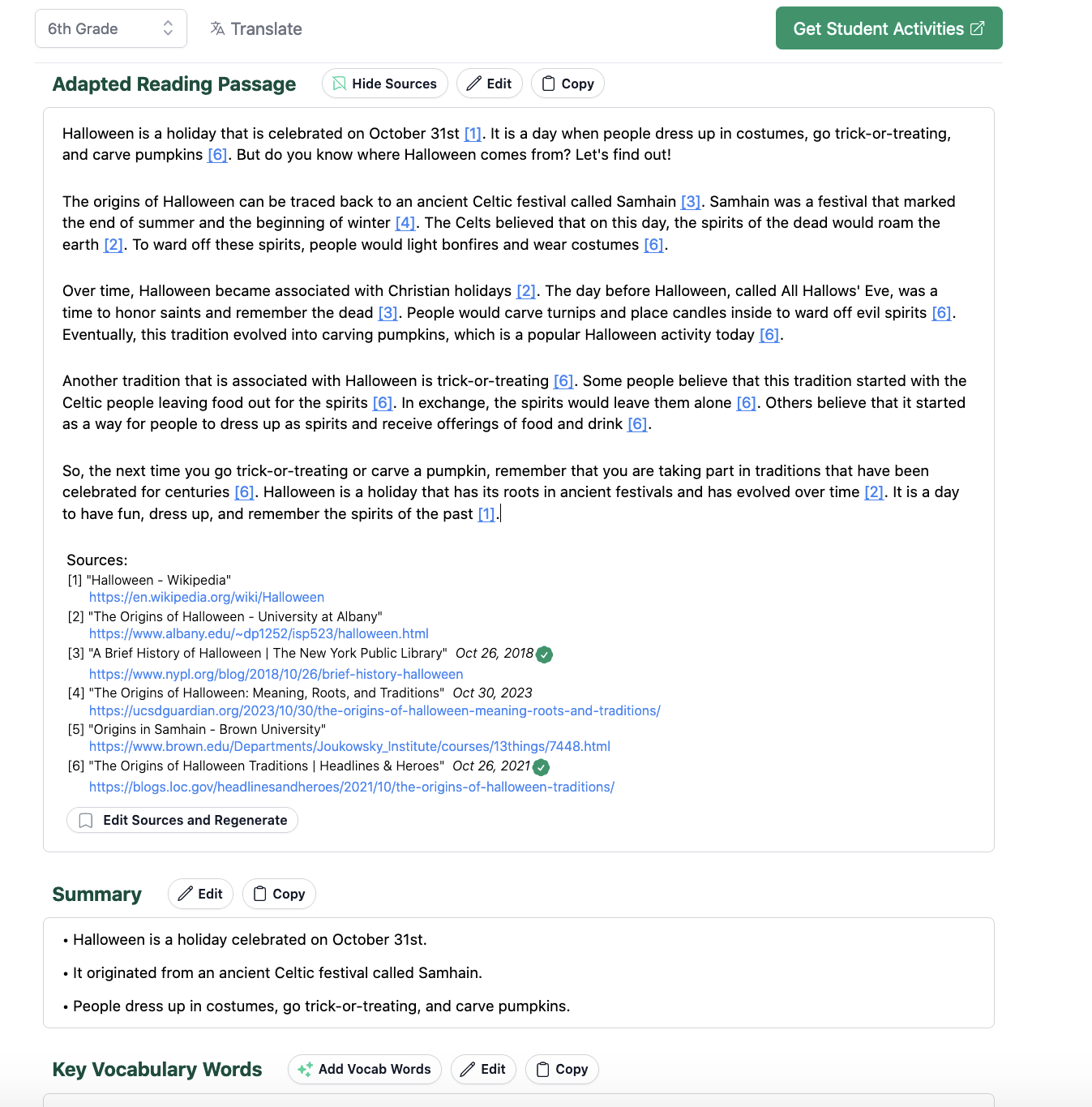
This is the teacher’s view of the Diffit-generated text, including sources. The ability for a primary or secondary teacher to create a targeted, sourced text in just a minute or two is a powerful resource, and perhaps the best feature of this tool is that just like for any other text that a teacher might choose, after Diffit AI creates the informational text, the teacher can then access the large variety of templates to create classroom materials for the topic.
What are the Strengths and Weaknesses of Diffit for Teachers?
Diffit’s primary strength is in its ability to take any text, adapt it to a specific US grade level, and then use AI to quickly generate student classroom activities from a wide variety of templates.
The templates are grouped into categories: Reading Strategies, Writing Strategies, Text Analysis, Collaboration, and Critical Thinking.
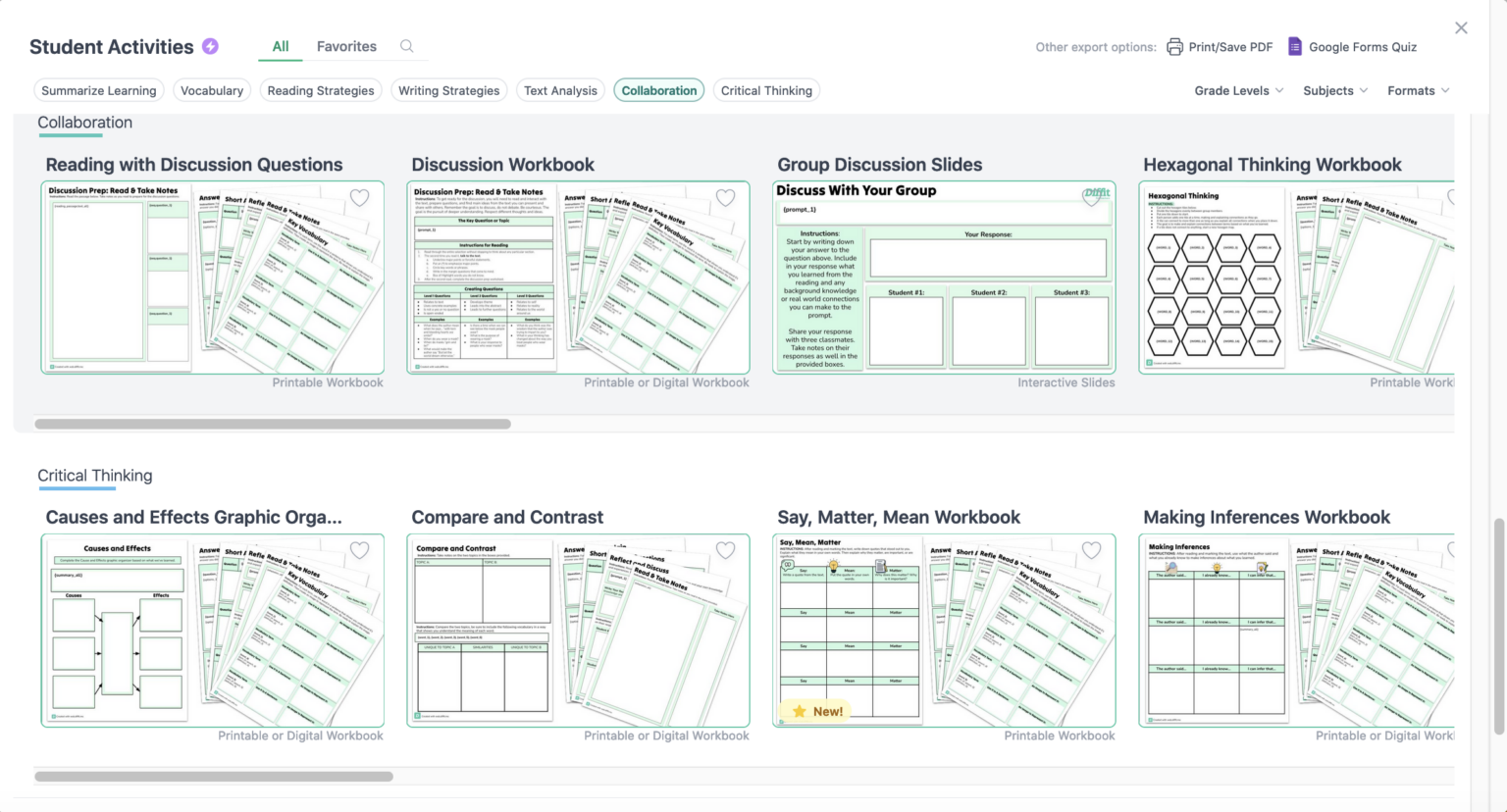
After testing a number of texts with Diffit’s templates, we were impressed by the range of activities a teacher can quickly and easily create, and by the fact that these activities are classroom ready in minutes. We see Diffit as a potentially useful resource, particularly for US-based Social Studies, History, and perhaps some Science Teachers.
While exploring Diffit’s capacity for adapting reading materials and creating classroom resources for native-English speaking students, one weakness we identified was that in some cases, Diffit misses the mark and doesn’t accurately create reading materials appropriate for the specified grade level.
This problem arises because Diffit uses generative AI, rather than analyzers, to determine whether material is suitable for a particular grade level. As is discussed in the Cathoven section below, Cathoven, on the other hand, employs the most accurate analyzers on the market, and all of the tools on the Cathoven site utilize these analyzers to accurately adapt materials to the selected level.
Overall, Diffit appears to be a useful resource for primary or secondary teachers in the US who are teaching native English-speaking students, but how well does Diffit work for language teachers?
Is Diffit Useful for Language Teachers?
While Diffit allows primary and secondary teachers to adapt materials to a specific US grade level and to quickly produce classroom-ready materials, we did not find that Diffit has the specific resources which are most useful for English language teachers.
With Diffit, there is no ability to evaluate or create materials based on the CEFR scale, and while US grade-level differentiation of materials can be valuable for teaching in native English-language classrooms, it is often not appropriate for working with students of English as a Foreign or Second Language.
Language students require different types of repetition and scaffolding than first language students in order to promote readability and comprehensibility, and we do not see Diffit as providing these necessary components for language students.
Cathoven vs Diffit: What is the Difference for Language Teachers?
The primary difference between Cathoven and Diffit is that while Diffit is focused on producing general materials for specific US grade levels, Cathoven is an AI resource created by language teaching professionals, for language teachers.
The Cathoven Language Hub offers AI resources to quickly analyze the difficulty of any text and to produce CEFR level appropriate materials for the language learning classroom. CEFR, rather than US grade levels, is the gold standard for measurement in the language teaching community.
As many language teachers are aware, CEFR stands for Common European Framework of Reference. It is the most trusted language ability measurement system in the world, and it ranks students as beginner, intermediate and advanced, and CEFR is also used to rank the difficulty of teaching materials for skills like reading and listening. The traditional CEFR Levels, from beginner to advanced are: A1, A2, B1, B2, C1, C2.
Cathoven has harnessed the power of AI technology to assign CEFR scores, which not only tell you the traditional CEFR level of a text, but also, for the first time, Cathoven differentiates the level of a text within a specific CEFR level.
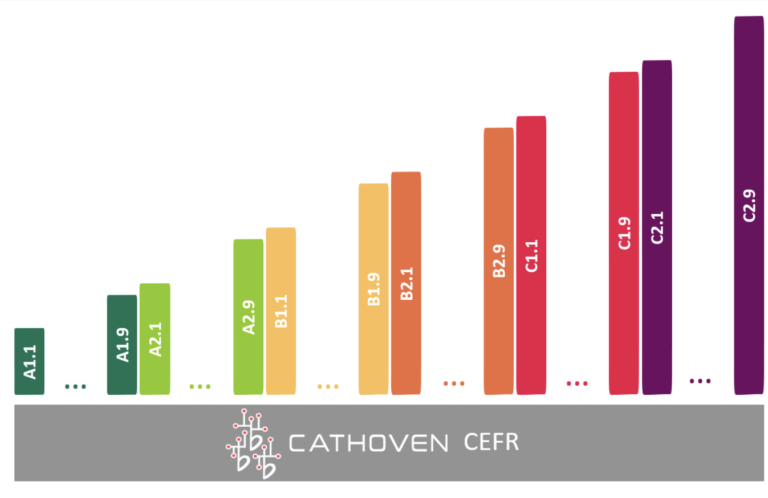
All language teachers know that there can be a great range of student ability within a given CEFR level. In other words, two students who are both evaluated at CEFR B1 may, in reality, have a fairly large gap in their abilities to read and understand English, even when both are reading the same material at the B1 level.
The same is true for reading materials, so Cathoven split each CEFR level into ten levels to solve this problem. For example, the Cathoven CEFR Checker will assign A2.6 to a particular text, instead of simply A2, which is the traditional level indicator.
What is Cathoven’s CEFR Checker and How does it Work?
As a long-time English language teacher and materials writer for English language students, I believe that the Cathoven CEFR Checker is a game changer.
The Cathoven CEFR Checker doesn’t just break down each level into ten sub-levels, but if we look at an example text from one of my projects, we can see that while the CEFR Checker assigns the text a General Level of B2.3, it also provides a CEFR breakdown for the specific categories of Vocabulary, Verb Forms, and Sentences. In this example, we find a General Score of B2.3, but the category breakdown indicates that Vocabulary is rated CEFR A2.2, Verb Forms A2.9, and Sentences at B2.6.
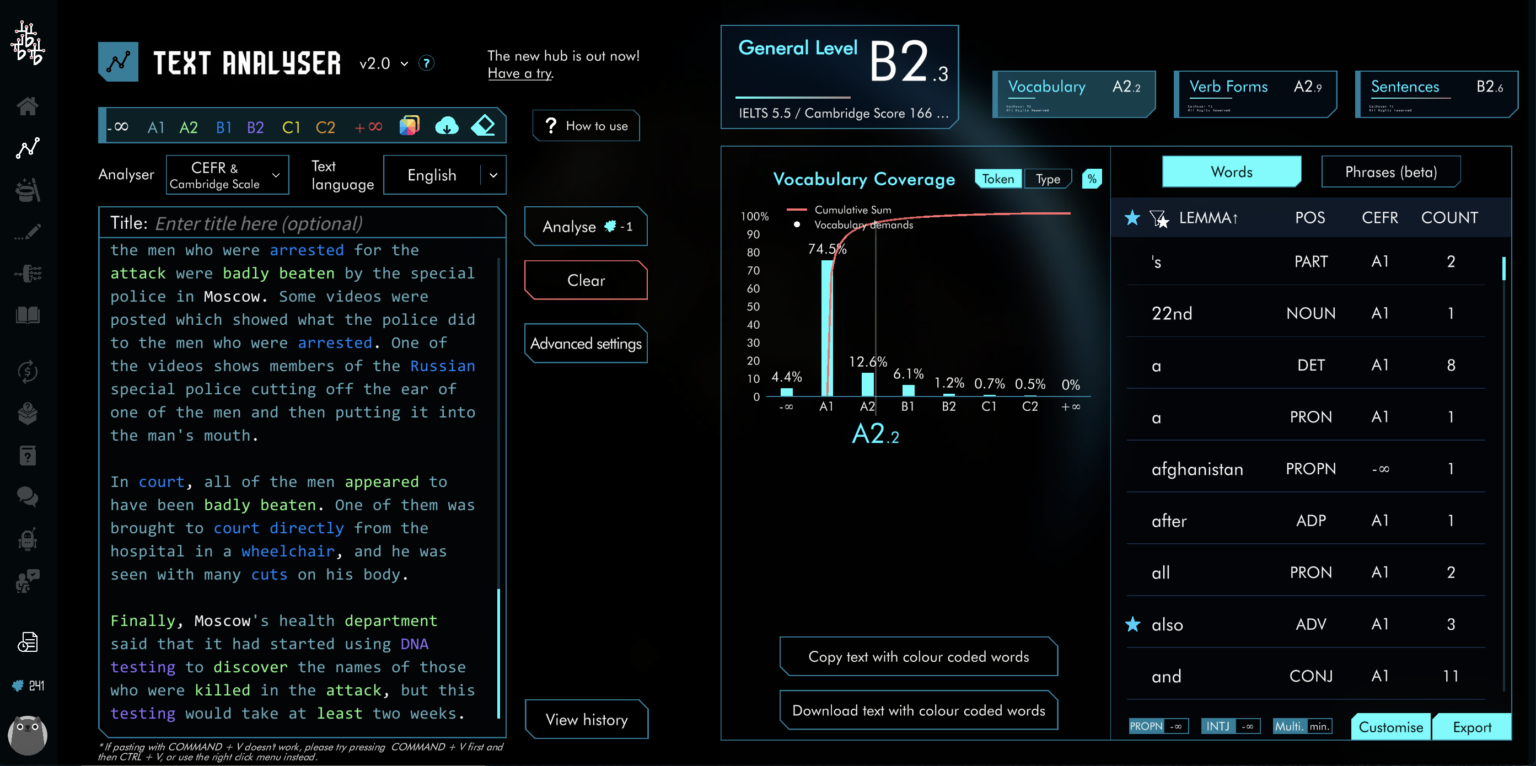
Thus, we can quickly see that the sentence structures in my text are more complex than either the Vocabulary or the Verb Forms, so if I want to adapt this reading for the CEFR A2 level, all I need to do is to work on sentence length and sentence structure.
As a materials writer, this is the first tool I have found which can quickly identify specifically what I need to do to make an adjustment to the CEFR level of any text.
This is a fantastic tool for any English language teacher who wants to quickly evaluate real-world material for use in their classroom. And the CEFR Checker is not the only new tool to be found on Cathoven.
What is the Cathoven CEFR Level Adapter?
While a language teacher can quickly determine the detailed CEFR score for any text using the CEFR Checker, with the Cathoven CEFR Level Adapter, a teacher can also quickly change the level of a given text.
As a materials writer, the Cathoven CEFR Checker allows me to diagnose a specific text and define any categories of my text which might need adjusting, but for a busy English Language teacher, the Cathoven Level Adapter uses AI technology to quickly adapt your text to a specific CEFR Level for you.
Changing the CEFR level of a given text is as easy as simply pasting your text into the Level Adapter, and allowing the AI to generate text for you at the desired level.
Cathoven Allows Language Teachers to Create Real World Content
Cathoven harnesses the power of AI to allow language teachers to quickly assess and adapt content from the real world and bring it into the classroom.
Every experienced language teacher knows that bringing real world content into the classroom, either as a primary text to be studied, or as supplementary material, brings a measure of excitement and engagement to the classroom that is impossible to replicate using traditional language teaching texts.
What is the Cathoven Reading Generator?
Like Diffit’s Topic Search, which allows teachers to do a search on nearly any topic and then generate graded text for use in the classroom, the Cathoven Reading Generator also uses AI to produce classroom-ready texts on just about any topic.
The major difference between the Diffit Topic Search and the Cathoven Reading Generator is that while Diffit produces texts at a specified US grade level, Cathoven’s Reading Generator produces text to a specific CEFR level.
As we discussed earlier, while the ability to produce materials to targeted US grade levels can be valuable for US-based primary and secondary teachers, for language teachers, the ability to generate classroom materials at a specified CEFR level is a far more valuable resource.
If we look at another example, here I use the Cathoven Reading Generator to create a text on the same topic which I used for Diffit, “What are the origins of Halloween?” Notice that like with the CEFR Checker, we get a detailed breakdown of the generated text. While I requested a reading at the B1 level, the Reading Generator shows me that the text measures CEFR B1.4.
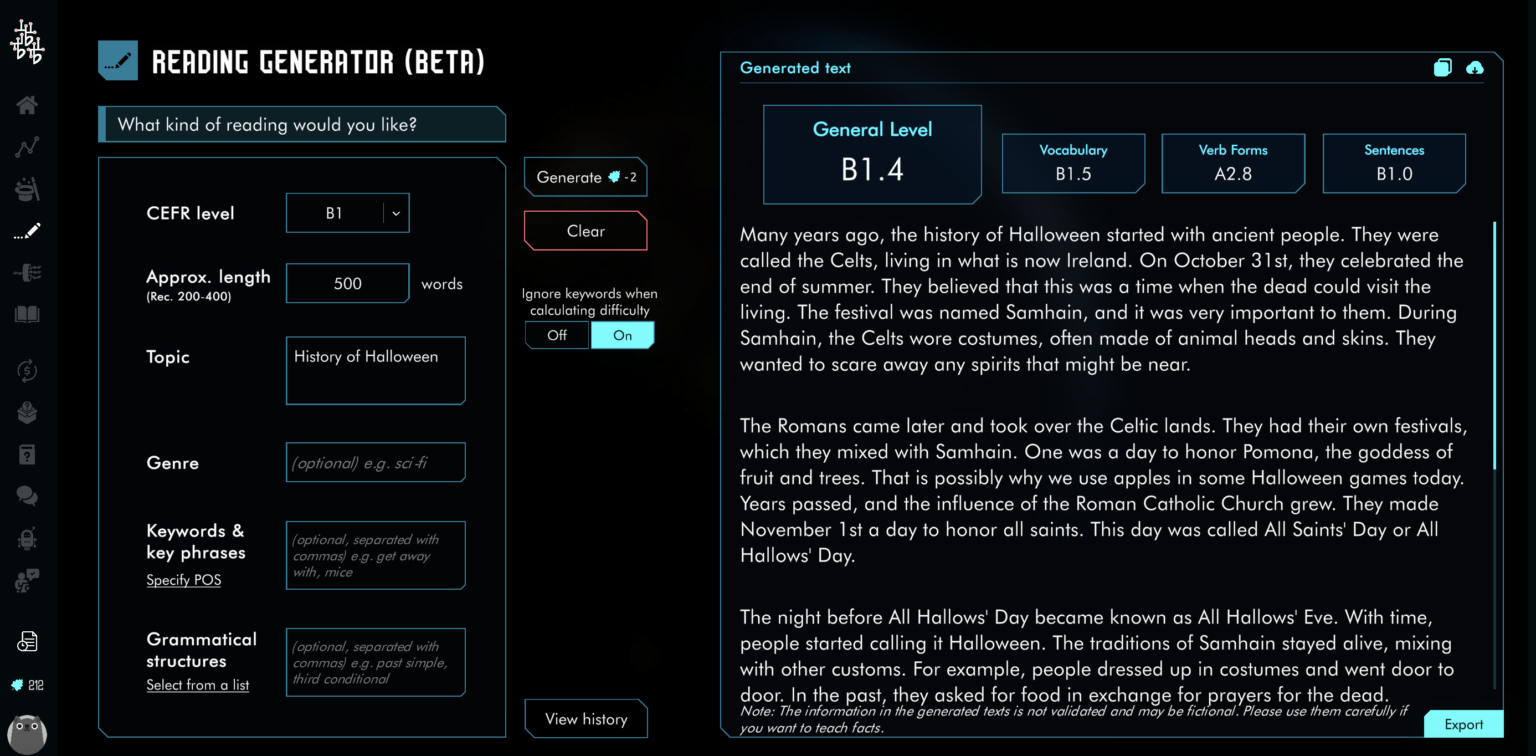
The Reading Generator also indicates that the most difficult aspect of the text is Vocabulary at CEFR B1.5 while the Verb Forms are the easiest category for this reading at A2.8. Thus, with Cathoven’s Reading Generator, language teachers receive specific information about the difficulty of the text they have produced, which is far more useful than simply a US grade level.
Cathoven Reading Generator and Targeted Practice
Another impressive feature of Cathoven’s Reading Generator is that when generating a text at a chosen CEFR level, the teacher is also able to specify desired grammatical structures for the text. This is especially helpful if you want to either reinforce structures which students are learning in a traditional textbook, or to review and consolidate previously learned structures. This targeted practice can really be invaluable in many teaching situations.
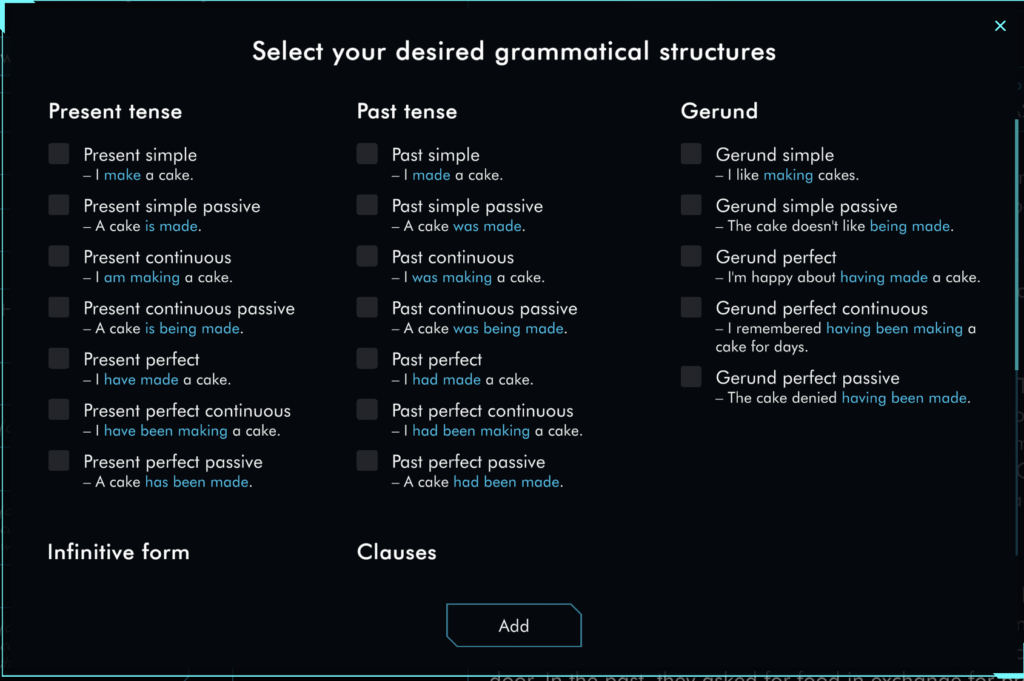
Cathoven’s Reading Generator has the ability both to produce CEFR leveled content on almost any topic imaginable and to allow a teacher to emphasize desired grammatical structures in the text. We believe that language teachers will find the Reading Generator to be a powerful, valuable resource for creating materials for their language classrooms.
Cathoven AI Assistant for Language Teachers
With this brief examination of both Diffit and Cathoven, and some of the features of each platform, we believe that it is fairly obvious that while Diffit is a resource which can be useful for US-based primary and secondary teachers who are teaching in native English-language classrooms, Cathoven provides powerful AI tools which focus on providing resources and materials for English language teachers.
If you are ready to explore Cathoven’s incredible capacity for both assessing texts and for employing AI to create CEFR level-specific classroom materials, feel free to visit Cathoven and try out a variety of these resources for free!

